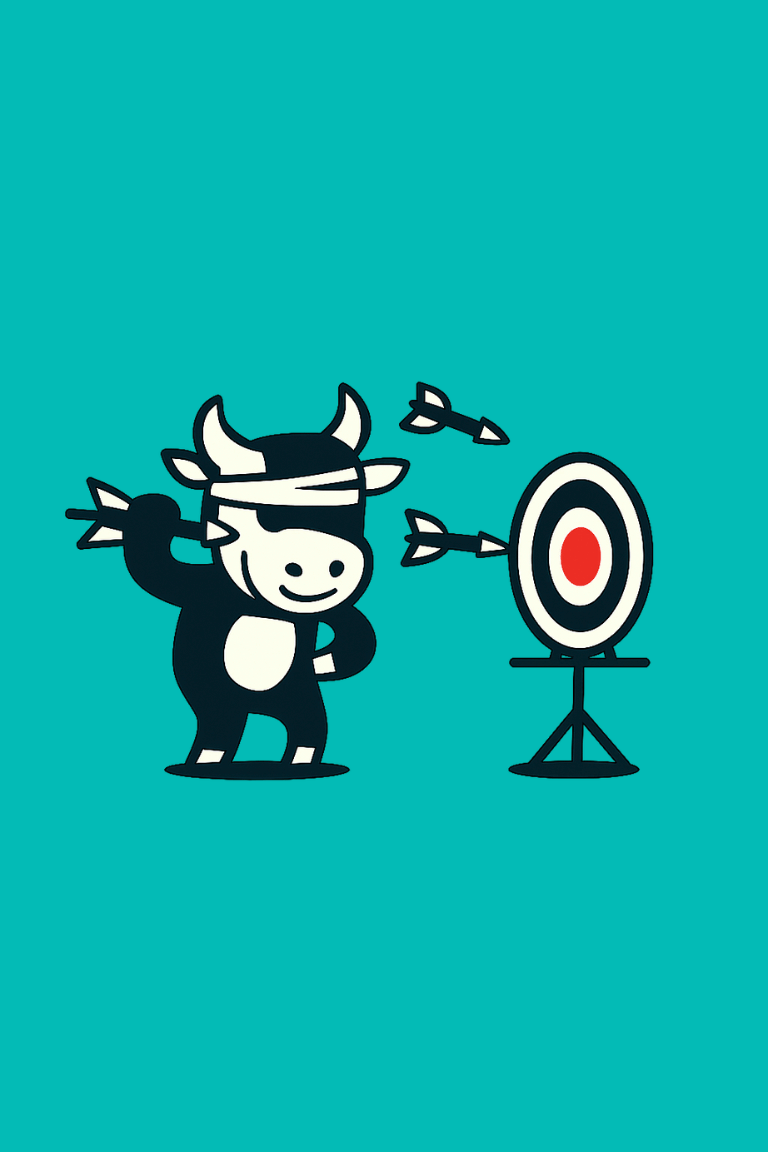
How to Avoid Targeting the Wrong Audience?
In the realm of marketing, audience analysis stands as the bedrock of success. By uncovering customer desires and behaviors, you can tailor strategies for precise targeting that truly resonates.
The landscape of audience analysis has evolved with the rise of data-driven insights. Segmenting your audience based on demographics, psychographics, and behaviors ensures customized messaging that meets specific needs.
Engaging your audience effectively hinges on understanding their motivations and challenges. By crafting content that speaks directly to them, you build connections that drive conversions and adapt to ever-changing market dynamics.
What is the importance of targeting the right audience?
Targeting the right audience is essential for any marketing strategy as it directly impacts business success. By understanding and reaching the appropriate audience, companies can guarantee their messages resonate, leading to increased engagement and conversions. This focus enhances customer satisfaction since products and services are customized to meet specific needs.
Additionally, targeting reduces wasted resources on disinterested groups, optimizing marketing budgets and efforts. For example, a tech company targeting young professionals with their latest gadgets will likely see higher sales than if they marketed broadly. Overall, identifying the right audience fosters stronger customer relationships and drives growth.
How does targeting the wrong audience affect businesses?
Targeting the wrong audience can impact businesses negatively. To begin with, it leads to wasted resources, both concerning time and money, as marketing efforts do not reach the intended consumers. This misalignment results in low conversion rates, where potential customers do not engage or make purchases, ultimately reducing return on investment.
Additionally, there is a risk of damaging brand’s reputation. If the marketing message does not resonate with the audience, it can lead to confusion or disinterest in the brand.
Furthermore, targeting the wrong audience can skew data analytics, making it difficult to understand true consumer preferences and behavior. This inaccurate data can misguide future marketing strategies, perpetuating the cycle of ineffective targeting. Businesses might miss out on reaching their actual target market, losing competitive advantage and potential market share. By focusing on the right audience, businesses can enhance customer engagement, increase sales, and build stronger brand loyalty, ensuring long-term success.
1- Conduct thorough market research
To avoid targeting the wrong audience, conducting thorough market research is important. This process begins with identifying your target demographic by analyzing factors such as age, gender, income level, and geographical location. Utilizing surveys, interviews, and focus groups can provide valuable insights into consumer preferences and behaviors.
Additionally, leveraging data analytics tools can help in understanding online behavior and trends, enabling businesses to tailor their marketing strategies effectively. Competitive analysis is also essential; understanding the strategies of similar organizations can reveal gaps or opportunities in the market. Furthermore, segment your audience based on specific needs and preferences, ensuring more personalized marketing approaches.
Regularly updating and refining this research is necessary, as markets and consumer behaviors are constantly evolving. By thoroughly understanding your market, you enhance your ability to create targeted marketing campaigns that reach the right audience, ultimately improving engagement and conversion rates. Integrating these insights into your marketing strategy ensures that your efforts resonate with the intended audience, maximizing the impact of your campaigns.
2- Create detailed buyer personas
Creating meticulous buyer personas is crucial for preventing the error of targeting the wrong audience. A buyer persona is a semi-fictional representation of your ideal customer based on market research and real data about your existing customers. By developing these personas, businesses can align their marketing strategies more closely with the needs and preferences of their target audience.
To craft an effective buyer persona, start by gathering demographic information such as age, gender, income level, and location. This data will help you understand the fundamental characteristics of your potential customers. Next, explore psychographics, which encompasses the interests, behaviors, and values of your audience. Understanding what motivates them can provide insights into how to effectively market to them.
Include specific details such as common challenges faced by the persona and how your product or service can offer a solution. For instance, if your business sells fitness equipment, a buyer persona might be a health-conscious individual who faces difficulty in making time for gym workouts. Highlight how your product provides a convenient home workout solution.
Incorporate this information to steer content creation, product development, and marketing strategies. By aligning your efforts with the needs and desires of your personas, you guarantee that your marketing messages resonate and engage effectively, ultimately leading to higher conversion rates and customer satisfaction.
3- Learn from your existing customers
To effectively target the right audience, learn from your existing clientele. Start by analyzing customer demographics, purchase behaviors, and feedback. This data reveals who your current customers are and why they choose your products. Utilizing tools like CRM systems or customer surveys helps gather insights.
Understanding the common traits and behaviors of your current customer base allows you to refine your marketing strategies. For instance, if a significant portion of your clients are young professionals, tailor your messaging to appeal to their preferences and lifestyle. Additionally, customer feedback highlights product features that resonate, guiding future marketing efforts.
4- Adopt a multi-segment marketing approach
Adopting a multi-faceted marketing approach allows businesses to target multiple distinct customer groups effectively. This strategy involves dividing the market into several segments based on criteria such as demographics, psychographics, behaviors, and needs. By understanding each segment’s unique preferences and requirements, companies can tailor their marketing efforts, ensuring relevance and resonance with diverse audiences.
For instance, a tech company could segment its market into young professionals, tech enthusiasts, and senior users. Each group receives tailored messages: Young professionals might prioritize productivity apps, tech enthusiasts could focus on cutting-edge features, and seniors may value ease of use.
Utilizing data-driven insights and customer feedback, businesses can refine their marketing strategies and allocate resources more efficiently. This approach not only maximizes reach and engagement but also enhances customer satisfaction by addressing specific needs. Ultimately, a multi-faceted marketing approach fosters deeper connections with various customer groups, leading to increased loyalty and business growth.
5- Avoid overly broad targeting
To avoid overly wide targeting, it’s essential to focus on specific audience segments rather than attempting to reach everyone. Wide targeting may seem efficient, but it often leads to wasted resources and lower engagement. By pinpointing distinct audience characteristics, such as demographics, interests, and behaviors, you can craft messages that resonate more effectively.
Start by identifying your core audience through in-depth research. Analyze customer data to understand who benefits most from your product or service. Use tools like customer personas to visualize these segments and tailor your marketing strategies accordingly. For example, if your product is eco-friendly, targeting environmentally aware consumers with specific sustainability messages can enhance engagement.
Employ data analytics to continuously refine your targeting approach. Monitor campaign performance across different segments, adjusting strategies based on what works best. This method not only optimizes resource allocation but also improves conversion rates by addressing the unique needs and preferences of each audience.
How can better targeting improve customer loyalty?
Better targeting improves customer loyalty by ensuring that marketing efforts resonate with the right audience, increasing engagement and satisfaction. By understanding customer preferences and behaviors, businesses can personalize their offerings, addressing specific needs effectively.
This personalized approach builds trust and fosters a deeper connection, leading to repeat business and brand advocacy. For instance, a report by the Harvard Business Review highlights that companies using advanced targeting techniques see a 20% increase in customer retention rates.
Additionally, tailored communications reduce customer churn and encourage long-term relationships, as customers feel valued and understood. Overall, precise audience targeting not only enhances customer experience but also drives business growth by cultivating loyal brand ambassadors.
What tools help refine audience targeting efforts?
Refining audience targeting efforts involves utilizing various tools that enhance precision and effectiveness. Key tools include:
- Google Analytics: This tool provides insights into audience demographics, interests, and behavior, helping tailor marketing strategies to specific segments.
- Facebook Audience Insights: It offers detailed information about user demographics and preferences, enabling businesses to create targeted ad campaigns on social media platforms.
- HubSpot: Known for its extensive CRM capabilities, HubSpot allows businesses to analyze customer interactions and refine target audience profiles based on real-time data.
- Semrush: Useful for identifying keywords and analyzing competitors, Semrush helps in understanding audience search behavior and optimizing content accordingly.
- SurveyMonkey: Conducting surveys through this platform helps gather direct feedback from potential and existing customers, refining audience understanding.
These tools collectively enhance audience targeting by enabling marketers to analyze data, understand audience needs, and tailor their strategies effectively.
Conclusion
Summarizing the exploration of targeting strategies, understanding your audience is key to authentic engagement. Data analytics refine your tactics by tailoring messages to audience preferences in real-time. Continuously testing campaigns is crucial for adapting to evolving audience interests and enhancing conversion rates.
Audience comprehension is pivotal. Personalized content ensures a deeper connection and improved brand image. Stay informed, adapt, and thrive in your marketing initiatives. Are you ready to enhance your targeting methods and boost audience interaction for success in reaching your marketing goals?



